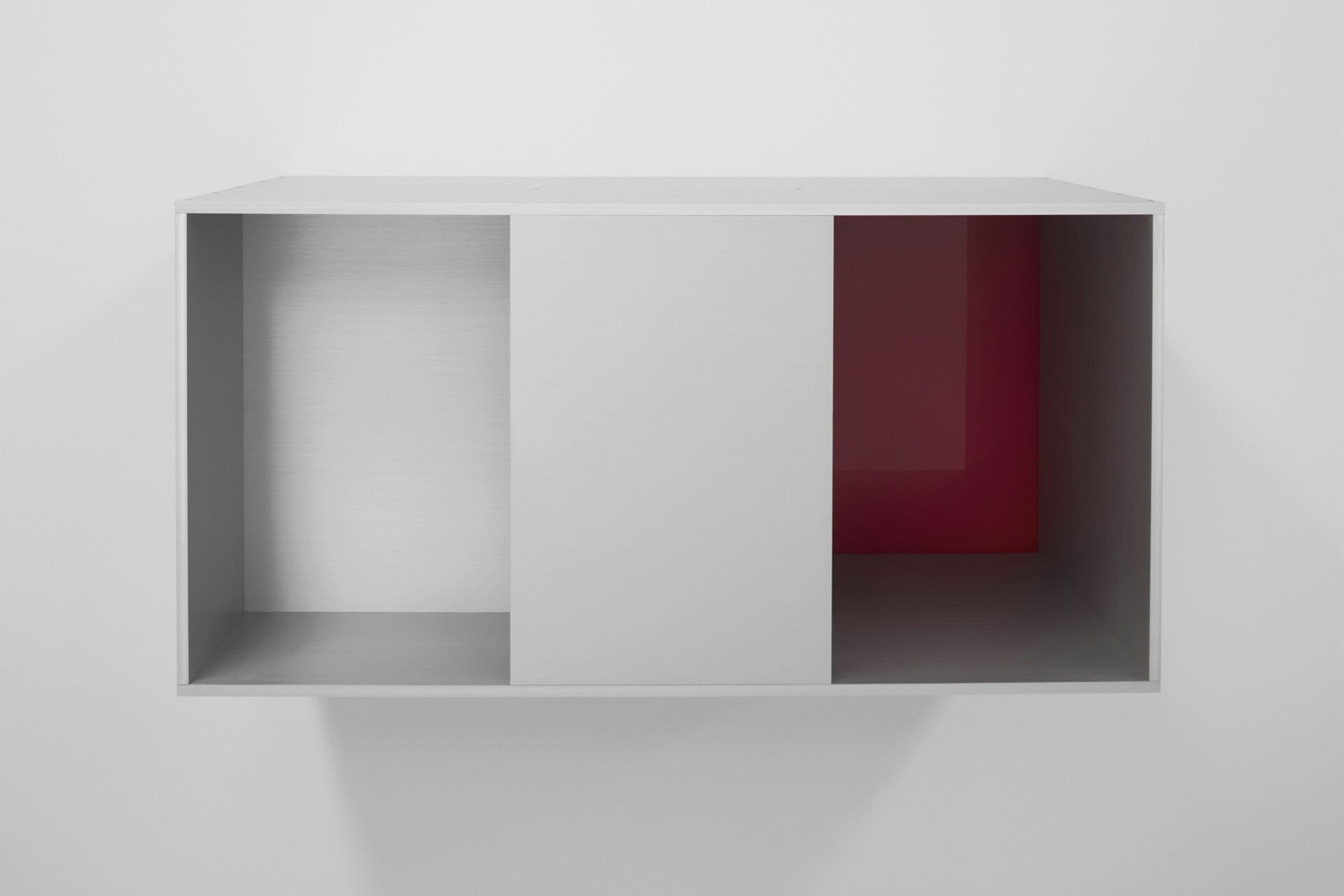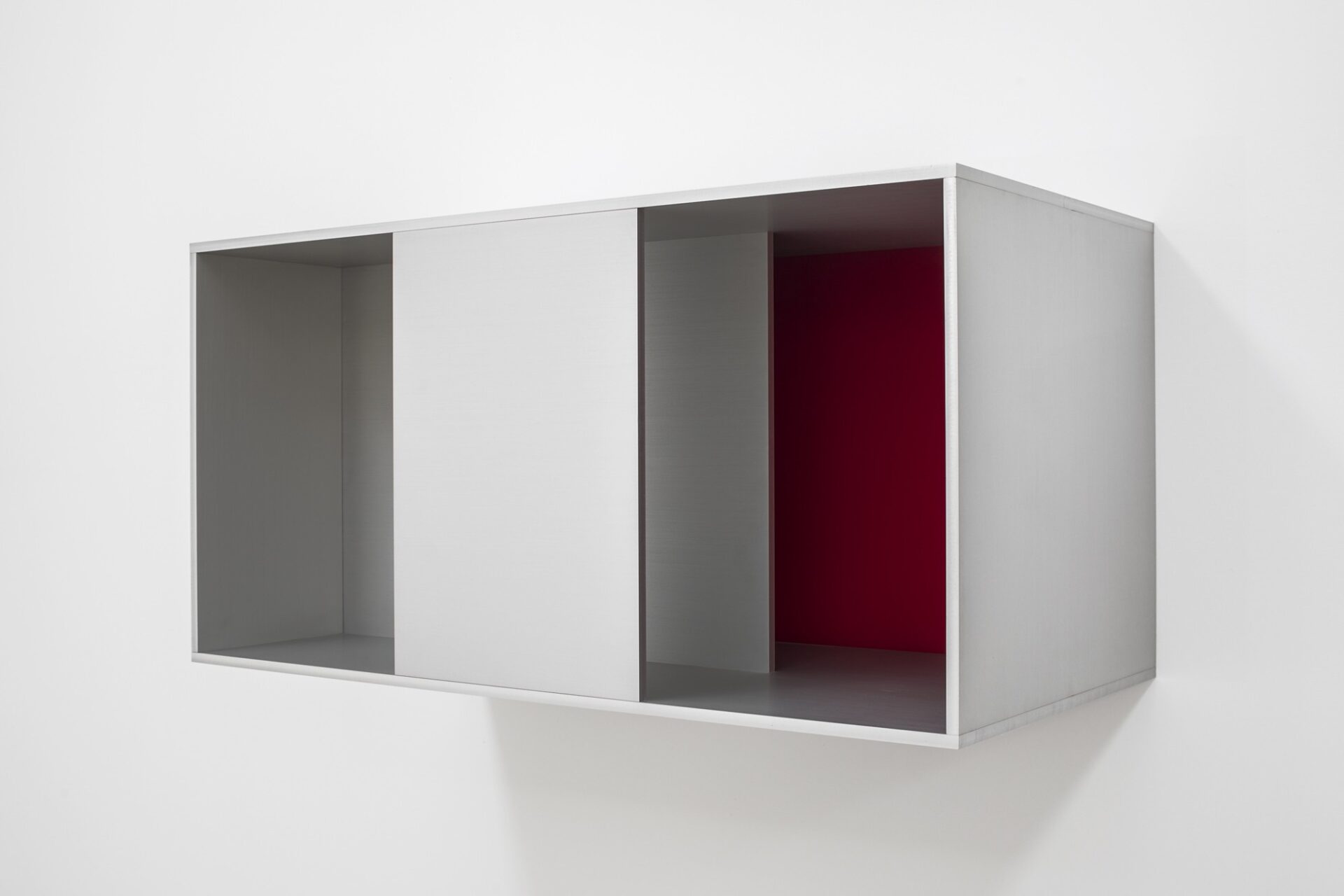Donald Judd installed seven anodized aluminum works at his studio at Las Casas. Each of the works have dimensions that are consistently proportional, either 1:4:1 or, as in this piece, 1:2:1. This work has a centered front panel that is one-third the width of work, a divider on the left side that is two-thirds the width of the work, and plexiglass in red on the right side of the work.
The aluminum in each of the pieces in the Las Casas studio went through an anodizing process, an electrochemical finishing treatment that increases the metal’s resistance to corrosion and wear.
Each work projects from the wall, as Judd indicated, “at least as much as its height.”1 In his 1983 essay “Art and Architecture,” Judd wrote, “Proportion is very important to us, both in our minds and lives and as objectified visually, since it is thought and feeling undivided, since it is unity and harmony, easy or difficult, and often peace and quiet. Proportion is specific and identifiable in art and architecture and creates our space and time.”2

